Sichuan Province


Introduction
Sichuan Province, located in southwestern China between the fertile Sichuan Basin and the rugged Hengduan Mountains, is a region of agricultural richness, cultural depth, and geographic diversity.
With over 83 million residents, it combines fertile plains, winding rivers, and mountainous terrain, creating a landscape where farming, trade, and urban development coexist. The province is also famous for its cultural heritage, spicy cuisine, and historical sites.
Cities like Chengdu, Leshan, and Mianyang highlight Sichuan’s mix of history and modernity. Chengdu, the provincial capital, serves as a major cultural, economic, and transport hub, while Leshan is home to the giant Leshan Buddha and ancient temples.
Sichuan’s central position in southwestern China has long made it a strategic hub for trade, agriculture, and culture, connecting the mountains with the basin. The province’s combination of urban centers, fertile plains, and mountainous landscapes illustrates how Sichuan has maintained economic vitality, cultural richness, and geographic importance over centuries.


Geography and Key Cities
Sichuan spans the fertile Sichuan Basin, framed by the Hengduan and Qionglai Mountains. The province is crossed by major rivers such as the Yangtze, Min, and Tuo, which create fertile farmland and dense waterways supporting agriculture and local communities. The humid subtropical climate brings hot, humid summers, mild winters, and abundant rainfall, especially in the basin, making the region one of China’s most productive agricultural areas.
The capital, Chengdu, is a key transport, cultural, and economic center, linking southwestern China to national and international trade and communication networks.
Leshan combines tourism, river scenery, and the famous Giant Buddha, while Mianyang is a hub for technology, defense, and industry.
Other important cities include Deyang, known for manufacturing and heavy industry, and Ya’an, celebrated for tea cultivation, cloud forests, and panda reserves.
Together, these landscapes and cities illustrate Sichuan’s blend of natural abundance, cultural heritage, and modern development.



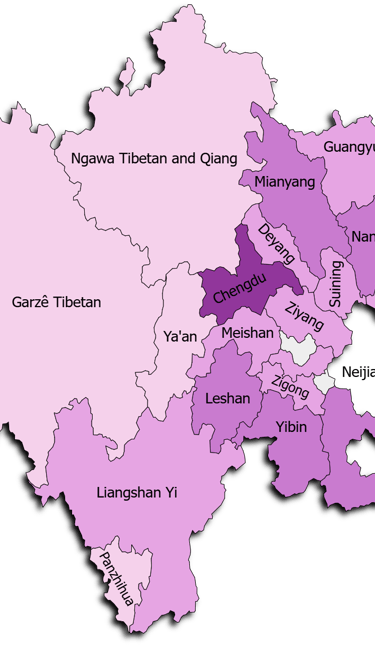
Sichuan has a long and storied history. The region was significant during the Shu kingdom in the Three Kingdoms period and later under the Tang and Song dynasties as a cultural and agricultural center. Sichuan’s fertile lands and strategic position made it a refuge and trade hub during wars and migrations.
Throughout history, the province experienced floods, famines, and population movements, while contributing scholars, poets, and strategists to Chinese culture. In modern history, Sichuan played roles in revolutionary movements and early industrialization. Today, Sichuan balances rich cultural heritage with agricultural, technological, and industrial development.
Historical Background




Nature and Landmarks
Sichuan brings together rivers, mountains, and rich cultural heritage, creating a province where nature and history intersect. The Sichuan Basin and surrounding mountains provide fertile farmland, dense forests, and dramatic gorges, while protected areas like the Giant Panda Sanctuaries, Jiuzhaigou Valley, and Huanglong Scenic Area shelter rare wildlife and diverse plant species, including the iconic giant panda.
The province is also home to remarkable historic sites. The Leshan Giant Buddha and Mount Emei reflect centuries of spiritual devotion, while the Dujiangyan Irrigation System showcases ancient engineering ingenuity.
Historic towns such as Luzhou and Jinsha preserve traditional architecture and trade heritage. Across Sichuan, smaller mountains, rivers, and rural villages offer opportunities for hiking, rafting, and cultural exploration, highlighting local traditions and scenic landscapes.


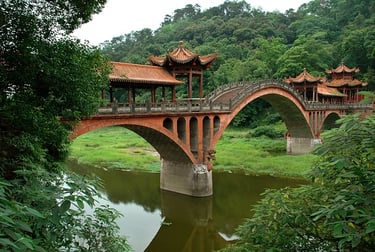

Culture and Cuisine
Sichuan’s culture reflects its role as a southwestern crossroads of trade, spirituality, and agriculture. Architectural styles range from ancient city walls in Chengdu to Buddhist temples on Mount Emei and historic riverfront towns, blending religious, commercial, and historical influences.
Festivals and folk traditions remain vibrant across the province, including lantern festivals, Sichuan opera performances, dragon boat races, and bamboo weaving, showing how Taoist and Buddhist practices, tea culture, and local arts continue to shape daily life. Sichuan’s culture intertwines mountains, rivers, and urban centers, creating a rich and layered heritage.
In language and arts, Mandarin is widely spoken, while Sichuanese and other local dialects preserve regional identity and history.
Traditional arts include paper-cutting, shadow puppetry, embroidery, Sichuan opera face-changing, and martial arts demonstrations, often inspired by agricultural life, religious rituals, and mountainous landscapes.
Sichuan’s cuisine is famous for bold, spicy flavors, liberal use of Sichuan peppercorns, and fresh local ingredients. Signature dishes include:
Mapo tofu, a spicy, numbing tofu dish from Chengdu,
Kung Pao chicken, combining peanuts, chili, and stir-fried chicken,
Hotpot (huoguo), a communal spicy soup cooked at the table,
Twice-cooked pork, slow-cooked and stir-fried for depth of flavor,
Dan dan noodles, savory noodles with chili and sesame paste,
Sichuan pickled vegetables, accompanying many meals,
Bamboo shoots and freshwater fish dishes, highlighting local rivers and hills.
Compared with northern or eastern provinces, Sichuan cuisine favors spicy, bold, and numbing flavors.


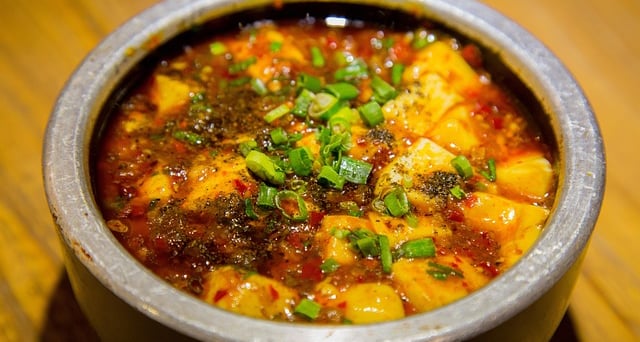



Economy and Modern Development
Sichuan is a key economic center in southwestern China, combining modern industry, technology, transport, and traditional agriculture. Chengdu and nearby cities grew into hubs for industry, research, and logistics during the 20th century, while the fertile Sichuan Basin has supported agriculture for centuries.
Tourism, centered on sites like Mount Emei, the Leshan Giant Buddha, and natural parks, plays an important role in the provincial economy, attracting visitors from across China and abroad.
Historically, Sichuan’s economy was shaped by fertile farmland, river trade, and the production of silk, tea, and handicrafts. Over time, these traditional sectors have been complemented by modern urbanization, high-tech industries, and cultural tourism, allowing the province to balance economic growth with heritage preservation.
Today, Sichuan maintains strong connectivity with the rest of China, linking its agricultural plains, mountainous regions, and urban centers into a dynamic and diversified economy.

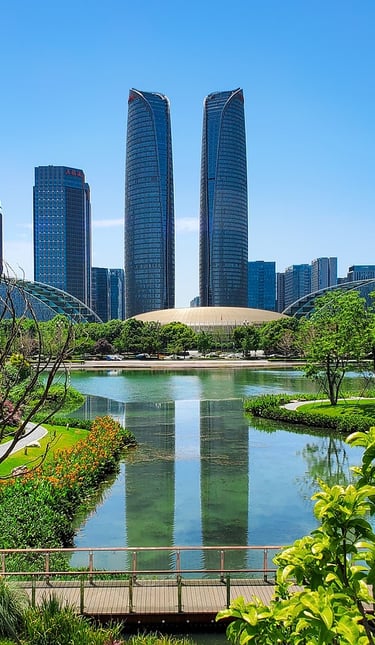


Sichuan has produced influential figures across literature, politics, religion, and the arts. Ancient scholars and strategists contributed to Chinese philosophy and governance, particularly during the Shu kingdom, Tang, and Song dynasties. The province also gave rise to Buddhist monks, poets, and opera performers, reflecting spiritual and cultural practices.
Sichuan is equally renowned for its martial arts, opera traditions, and literary contributions, making the province a cultural and artistic beacon. In modern times, Sichuan has contributed scientists, reformers, artists, and athletes who continue to embody its historical and cultural legacy.
People and Notable Figures

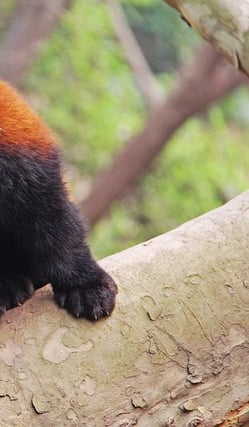
Current Trends and Daily Life
Daily life in Sichuan blends urban activity with rural and mountainous traditions. In Chengdu, residents enjoy tea houses, street food, and riverside parks, while locals participate in traditional Sichuan opera performances and calligraphy workshops.
In the surrounding towns and villages, life revolves around tea cultivation, pepper farming, rice terraces, and bamboo crafts, reflecting the fertile Sichuan Basin and nearby mountains.
Seasonal and cultural events remain central, including dragon boat races along the Min River, temple fairs in historic towns, lantern festivals, and local temple rituals. Daily life also integrates Sichuan’s love for spicy cuisine, with families and street vendors preparing hotpot, mapo tofu, and pickled vegetables, making meals both social and cultural experiences.


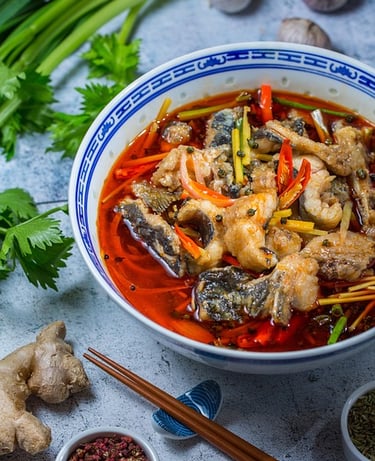



Practical Travel and Tips
Best time to visit: Spring and autumn offer mild weather and blooming landscapes, summer is hot and humid, and winter is mild in the basin but colder in the mountains
Getting there: Chengdu is a major transport hub with high-speed rail, an international airport, and river transport, making the province accessible from most Chinese cities
Highlights: Mount Emei, Leshan Giant Buddha, Jiuzhaigou Valley, Dujiangyan Irrigation System, Sichuan Giant Panda Sanctuaries
Local etiquette: Respect temple rituals, follow festival customs, and be mindful of spicy food preferences
Insider tip: Try hot dry noodles, explore ancient towns and temples, and visit Mount Emei for scenic and spiritual experiences.

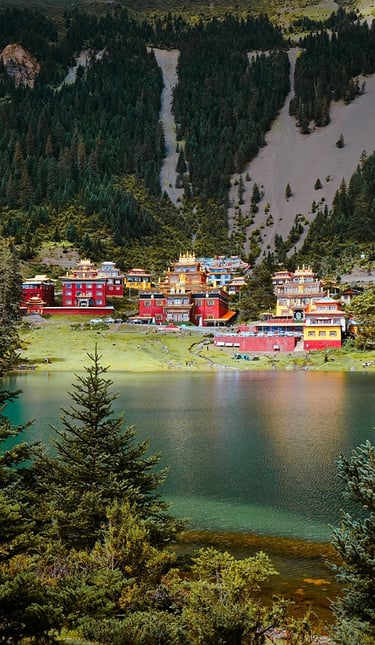






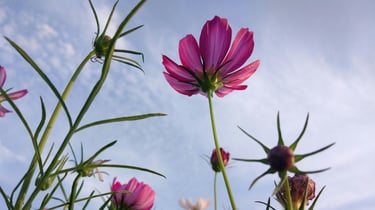





Climate
Plant and animal life
Agriculture
Manufacture
Sichuan has a subtropical humid climate in the basin areas, with hot, humid summers and mild, damp winters, while western highlands experience cooler, alpine conditions.
Summer heat is often accompanied by heavy rainfall due to monsoon patterns, whereas winter in Chengdu and the basin is foggy and relatively mild.
Compared with northern or inland provinces, Sichuan is wetter and more humid, particularly in the fertile Sichuan Basin.
Spring and autumn are generally pleasant, offering ideal conditions for outdoor activities. Mountainous regions experience large temperature variations and snowfall in winter.
Sichuan’s diverse geography, from the Sichuan Basin to the Qionglai and Hengduan mountains, supports rich ecosystems.
Forests harbor pine, fir, and bamboo, while rivers and wetlands provide habitats for giant pandas, red pandas, golden monkeys, and various bird species.
The province’s rivers and lakes support carp, freshwater fish, and amphibians. Protected areas, including Wolong and Jiuzhaigou, help preserve biodiversity.
Compared with provinces with drier climates, Sichuan’s flora and fauna thrive in humid, fertile conditions and high-altitude ecosystems.
Sichuan is known as the “Land of Abundance”, producing rice, wheat, rapeseed, and sweet potatoes, as well as citrus fruits, tea, and vegetables.
Livestock such as pigs and poultry complement crop production, and aquaculture is common in rivers and lakes.
Compared with northern provinces, Sichuan’s farming emphasizes water-intensive crops and subtropical produce, enabled by fertile soils and abundant rainfall.
Historically, Sichuan’s agricultural richness supported dense populations and fueled trade, helping the province develop both culturally and economically.
Sichuan combines agriculture, light and heavy industry, and high-tech sectors.
Cities like Chengdu and Mianyang host electronics, machinery, and software industries, while traditional sectors such as food processing and textiles remain important.
Tourism, especially linked to giant pandas, mountains, and cultural heritage sites, contributes to the economy.
Compared with provinces focused solely on agriculture or mining, Sichuan’s economy is diversified, balancing fertile farmland with industry, technology, and a growing tourism sector.
Navigation
Main Menu
nathan.china-sphere.com
© 2025. All rights reserved.